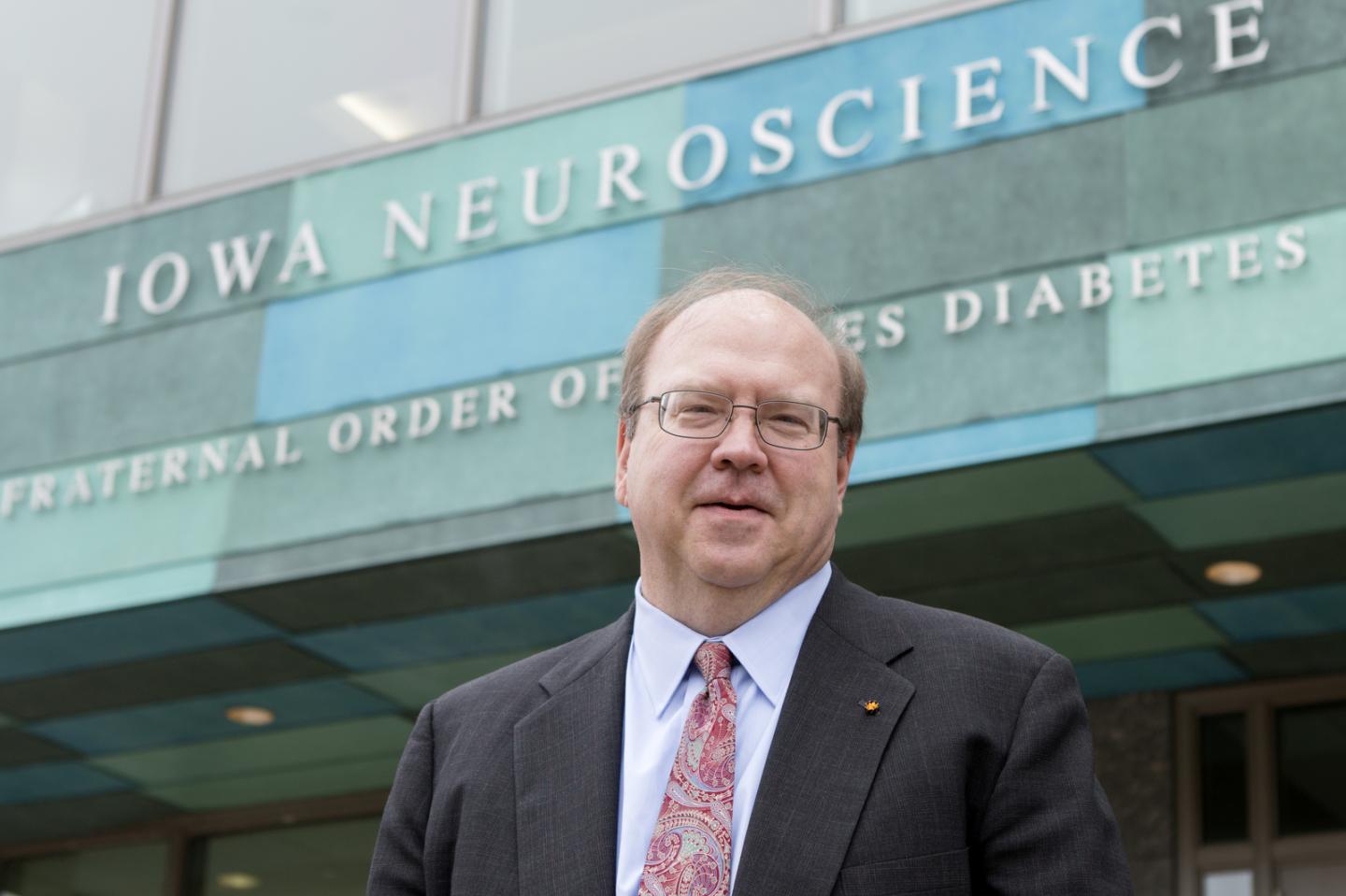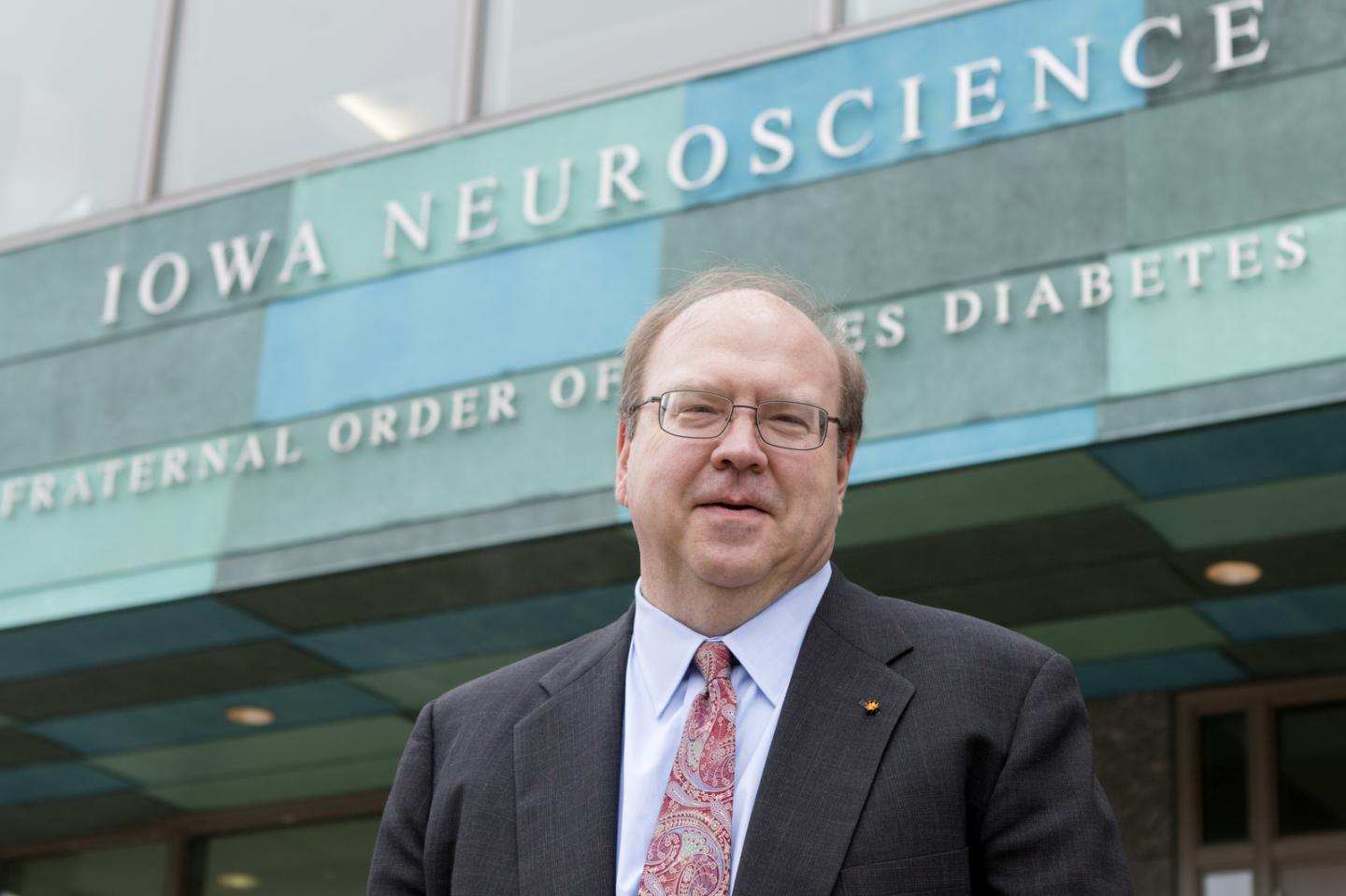
Credit: Susan McClellen, University of Iowa Health Care Marketing and Communication
Researchers aiming to understand why autism spectrum disorders (ASD) are more common in boys have discovered differences in a brain signaling pathway involved in reward learning and motivation that make male mice more vulnerable to an autism-causing genetic glitch.
"One intriguing aspect of autism is that it predominantly affects males; four boys are affected for every one girl," says senior study author Ted Abel, PhD, director of the Iowa Neuroscience Institute at the University of Iowa Carver College of Medicine. "We don't understand what it is about this disorder that predisposes boys as compared to girls to develop autism."
This male bias is also seen in other neurodevelopmental disorders, like attention deficit hyperactivity disorder (ADHD) and specific language impairments.
Nearly one in every 200 cases of autism is caused by the deletion of a section of DNA on a particular chromosome. This type of disorder is also known as a copy number variation (CNV). The mouse model of autism used by the research team is missing the same stretch of DNA.
The researchers tested the mice for abnormalities in reward-learning behavior — learning to associate actions with rewarding outcomes. This type of learning is mediated by a part of the brain called the striatum and is disrupted in people with autism and other neurodevelopmental disorders.
The study, published online Oct. 17 in Molecular Psychiatry, shows that only male mice with the autism-associated genetic deletion have abnormal reward-learning behavior. Female mice with the same genetic deletion are not affected. Moreover, these sex-specific behavioral differences are accompanied by sex differences in molecular signaling pathways in the striatum brain region.
"Problems with reward learning could explain why individuals with autism don't interact socially — because they don't find it rewarding in the same way. It could explain why people with autism have restricted interests — because they find only very selective things rewarding–and it could explain the differences in language acquisition — because the neural circuitry involved in reward learning is the same circuitry that mediates both language learning and production," says Abel, who also is the Roy J. Carver Chair in Neuroscience and UI professor of molecular physiology and biophysics.
Female protective effect
One of the genes contained in the missing section of DNA is an important signaling protein called ERK1. Activity of this protein affects the function of the striatum — the part of the brain that's involved in reward learning and motivation. The researchers found that male mice carrying this genetic deletion have increased activation of ERK1 in the striatum coupled with decreased amounts of another protein that reduces ERK1 activity. In contrast, the female mice carrying the genetic deletion do not have overactivated ERK1. In addition, despite the genetic deletion, the female deletion mice have higher levels of ERK1 than the male deletion mice. All of these molecular differences mean that ERK1 signaling is particularly sensitive to disruption in male mice.
"This is some of the first evidence in a mouse model of autism of a 'female protective effect,' from the behavioral to the molecular level," says Nicola Grissom, first author of the study who is now an assistant professor of psychology at the University of Minnesota. "These findings shed valuable new light on the science of neurodevelopmental disorders, many of which are more common in boys. However, they also address the broader question of how sex and gender influence the neurobiology of how we learn and behave, which may be involved in the different levels of risk between women and men for developing many other neuropsychiatric conditions, as well."
The study also found that male mice carrying this genetic alteration linked to autism have increased expression of a receptor for dopamine; the D2 receptor. The level of D2 expression did not increase in the female autism mice. Abel notes that risperidone, one of very few drugs that is approved by the Food and Drug Administration to treat ASD symptoms, targets D2 dopamine receptors.
"We think we are on the right track," Abel says. "We have begun to identify what may be an underlying reason why neurodevelopmental disorders predominantly affect boys, and that involves the function of the striatum and reward learning. This has implications for how we think about the underlying behavioral differences in autism and implications for how we develop both behavioral or pharmacological therapies to improve the lives of those with autism."
The new findings are part of a bigger study where Abel and his colleagues are investigating many different mouse models of autism, in which different autism-linked genes have been disrupted. The researchers are seeking commonalities among the different models. One emerging theme, supported by the new study, is that a deficit in reward learning may be a common feature of ASD, and males are specifically deficient in this type of behavior.
Abel notes that funding from the Simons Foundation was critical to the success of the project.
"None of this would have happened without the support of the Simons Foundation Autism Research Initiative (SFARI). The impact they have had on autism research has been tremendous," he says.
###
In addition to Abel and Grissom, the research team also included Sarah McKee, Hannah Schoch, Nicole Bowman, Robbert Havekes, W. Timothy O'Brien, Elena Mahrt, Steve Siegel, Kathryn Commons, Christine Portfors, Thomas Nickl-Jockschat, and Teresa Reyes.
Media Contact
Jennifer Brown
[email protected]
319-335-3590
@uihealthcare
http://www.uihealthcare.com/index.html
Related Journal Article
http://dx.doi.org/10.1038/MP.2017.184





